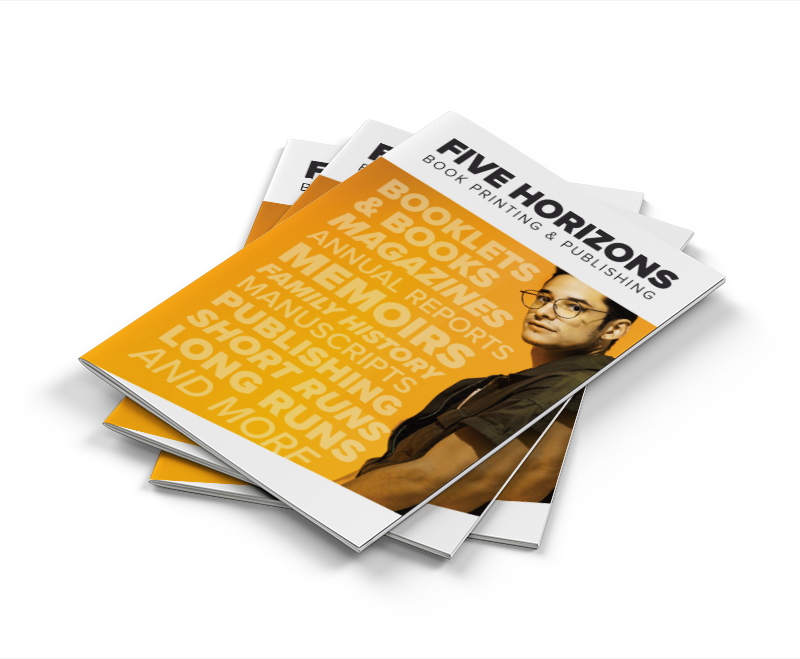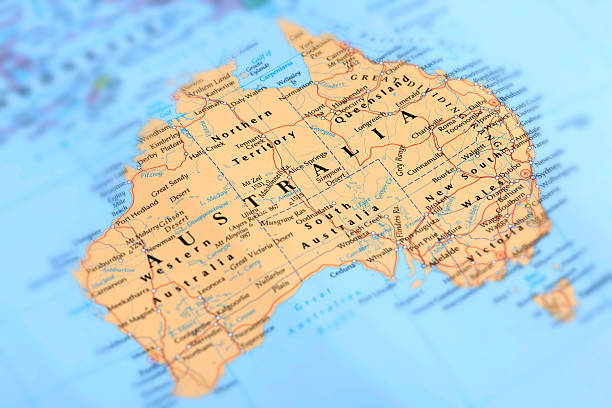






Welcome to our article on the environmental impact of book printing on demand. In today’s digital age, where e-books and digital publications are becoming increasingly popular, it is important to examine the environmental consequences of traditional book printing processes. With a focus on book printing on demand, we will explore the printing process and its environmental impact.
Traditional book printing involves large print runs, which result in significant paper consumption and energy usage. However, book printing on demand offers a more sustainable alternative. By printing books only when they are ordered, print on demand reduces waste and energy consumption.
In this article, we will delve into the carbon footprint of traditional book printing, waste reduction through print on demand books, eco-friendly materials used in on-demand printing, and the sustainable manufacturing practices implemented by Five Horizons Book Printing. We will also discuss the benefits of localisation in reducing transport emissions and supporting local economies.
Furthermore, we will address the importance of considering print quality in conjunction with environmental considerations, and explore the life cycle of print on demand books. We will also compare book printing on demand with digital Kindle books, highlighting their respective advantages and catering to the preferences and needs of readers.
Lastly, we will examine the role of distribution networks in minimizing the environmental impact of print on demand services and discuss the financial and environmental costs associated with returns in the book industry. In conclusion, we will emphasize the empowerment of authors and readers to make eco-conscious choices and the ongoing journey towards sustainable publishing.
In today’s digital age, the world of publishing has undergone significant changes. As authors and readers embrace the convenience and accessibility of the online realm, the traditional publishing model has evolved to better meet their needs. One such innovation that has gained traction is print on demand (POD).
Print on demand is a revolutionary printing strategy that enables books to be printed only by self published authors when they are ordered. Unlike traditional publishing methods that require large print runs, POD eliminates the need for excess inventory and reduces the financial risks associated with unsold books. By leveraging digital technology, POD allows for the efficient production of books on an as-needed basis, providing authors with greater flexibility and control over their publishing journey.
Self-publishing has emerged as a powerful force that has transformed the publishing landscape. Authors can Self Publish and now bypass traditional publishing houses, taking charge of their own publishing journey. Print on demand has become an integral part of the self-publishing revolution, allowing authors to easily produce physical copies of their books without the need for large financial investments.

At Five Horizons Book Printing, we recognize the growing demand for print on demand services within the publishing industry. Our approach to POD combines cutting-edge technology with a commitment to sustainability. We work closely with authors to understand their specific printing needs and provide personalized solutions. With our state-of-the-art printing equipment, and viable Print on Demand site and meticulous quality control processes, we ensure that each book printed on demand meets the highest standards of excellence.
Organising a Print Book via a POD Service ist restrited to paperback printing services either. Self Publishing Services can extend to Childrens Books, Cookbooks, HardCover Photo Books and many more ! Printed Book Prices are viable is all POD products, particulalrly with the advent of quality digital print techology.

Traditional book printing used to have a significant environmental impact, however in the last few decades most stocks are FSC Certified, or 100% recycled. Sustainable Printing is not only common now, its completely mainstream.
Print on demand books offer a sustainable solution to waste reduction in the publishing industry. Unlike traditional printing methods, where books are produced in large quantities and stored in warehouses, print on demand books are only printed when they are ordered by customers. This eliminates the need for excess inventory, reducing the risk of unsold books and ultimately minimizing waste.
By printing books on demand, publishers can optimize their production process, ensuring that resources are not wasted on books that may not be sold or read. This not only significantly reduces paper consumption but also minimizes energy usage and carbon emissions associated with the printing and storage of excess books.
Print on demand also allows for greater flexibility in book production. Publishers can easily update and revise books as needed, without the need for large-scale reprints. This not only reduces waste but also ensures that readers receive the most up-to-date and relevant content.
Furthermore, the print on demand model supports independent authors and self-publishers by offering a cost-effective and sustainable way to bring their books to market. It eliminates the financial risk and waste associated with traditional printing methods, allowing authors to focus on creating quality content and connecting with their readers.
Overall, print on demand books play a vital role in waste reduction in the publishing industry. By embracing this innovative printing strategy, publishers can reduce their environmental footprint, promote sustainability, and meet the evolving demands of readers in a more eco-friendly way.
| Benefits of Print on Demand Books for Waste Reduction |
|---|
| Reduces paper consumption |
| Minimizes energy usage and carbon emissions |
| Eliminates excess inventory and unsold books |
| Allows for easy updates and revisions |
| Supports independent authors and self-publishers |
On-demand printing offers a sustainable solution for book production by utilizing eco-friendly materials. This section focuses on two key components of eco-friendly on-demand printing: post-consumer recycled paper and environmentally friendly inks and dyes. These materials contribute to reducing environmental impact and promoting a more sustainable publishing industry.
Post-consumer recycled paper is a crucial element in the production of on-demand printed books. This type of paper is made from recycled materials, reducing the demand for virgin fiber and minimizing deforestation. By opting for post-consumer recycled paper, publishers and authors can play a role in preserving forests and mitigating the environmental impact of paper consumption. On-demand printing embraces the use of this eco-friendly material, making it an excellent choice for environmentally conscious book production at a decent print cost..
In addition to utilizing post-consumer recycled paper, on-demand printing also relies on environmentally friendly inks and dyes. These inks and dyes are designed to minimize harmful effects on the environment without compromising print quality. They are often made from renewable resources and use less toxic chemicals, reducing water pollution and waste. By employing environmentally friendly inks and dyes, on-demand printers contribute to a more sustainable printing process while maintaining vibrant and high-quality printed materials.
At Five Horizons Book Printing, we are committed to sustainable manufacturing practices that prioritize minimizing waste and reducing environmental impact. We understand the importance of taking responsibility for our environmental footprint and strive to make a positive difference in the publishing industry.
Our sustainable manufacturing approach encompasses various aspects of our operations, from sourcing materials to production and waste management. By integrating eco-friendly practices throughout our processes, we aim to contribute to a more sustainable and greener future.
When it comes to sourcing materials, we prioritize the use of sustainable materials whenever possible. This includes sourcing post-consumer recycled paper, which reduces the need for virgin fiber and helps preserve forests. We also ensure that our inks and dyes are environmentally friendly, minimizing the impact on the environment.
In terms of production, we embrace the print-on-demand model, which significantly reduces waste compared to traditional printing methods. With print on demand, books are only printed when they are ordered, eliminating the need for excess inventory and reducing the risk of unsold books ending up in landfills.
Additionally, we have implemented efficient waste management practices within our manufacturing facilities. We strive to minimize waste generation by implementing recycling programs and proper disposal procedures for any waste that is produced. By recycling and responsibly managing waste, we aim to further reduce our environmental impact.
By prioritizing sustainable manufacturing practices, Five Horizons Book Printing aims to lead by example and inspire other players in the publishing industry to adopt similar approaches. We believe that by working together in the self publishing process, and making conscious choices, we can create a more sustainable future for the publishing industry and the planet.
| Sustainable Manufacturing Practices at Five Horizons Book Printing |
|---|
| Use of sustainable materials, such as post-consumer recycled paper |
| Environmentally friendly inks and dyes |
| Adoption of the print-on-demand model to reduce waste |
| Implementation of efficient waste management practices |

Localisation plays a crucial role in reducing transport emissions and supporting local economies in the book printing industry. By partnering with local printers for printing and distribution, book publishers can significantly decrease the carbon footprint associated with long-distance shipping and transportation.
Transporting books over long distances results in significant carbon emissions due to the use of fossil fuels in vehicles and the energy required for transportation logistics. However, by localising the printing and distribution process, publishers can minimize emissions by reducing the distance traveled by books.
By establishing partnerships with local printers, publishers can print books closer to their intended readers, cutting down on the distance books need to travel from production to the end consumer. This not only reduces the environmental impact but also contributes to faster and more efficient delivery times.
In addition to reducing transport emissions, localisation in book printing also has positive effects on local economies. By engaging with local printing facilities, publishers can support local businesses and industries, creating jobs and contributing to the economic growth of the region.
Local printers benefit from the increased workload and revenue generated by the partnership with publishers, fostering economic sustainability within their communities. Moreover, by avoiding long-distance shipping, publishers can allocate more of their budget towards paying fair wages to local printing professionals, further strengthening the local economy.
When it comes to book printing, print quality is undoubtedly a crucial aspect. After all, readers want to enjoy an aesthetically pleasing and visually engaging reading experience. However, in our pursuit of print quality, it is vital to consider the environmental impact of our printing choices on your self publishing journey.
By striking a balance between print quality and environmental considerations, we can contribute to sustainable publishing practices. This involves making conscious decisions throughout the printing process to minimize waste, reduce energy consumption, and choose eco-friendly materials.
One of the key factors to consider is the choice of paper. Opting for post-consumer recycled paper helps reduce the need for virgin fiber, contributing to the preservation of forests. By using environmentally friendly inks and dyes, we further enhance the sustainability of our printing practices.
At Five Horizons Book Printing, we understand the importance of both print quality and environmental responsibility. Our commitment to sustainable manufacturing includes employing waste reduction strategies, utilizing eco-friendly materials, and implementing efficient printing processes.
By prioritizing print quality while keeping environmental considerations in mind, we can create books that not only captivate readers but also contribute to a greener future.
| Print Quality | Environmental Considerations |
|---|---|
| Attention to detail | Minimize waste |
| High-resolution images | Reduce energy consumption |
| Crisp typography | Choose eco-friendly materials |
Print on demand books offer a sustainable and efficient alternative to traditional book printing methods. Understanding the life cycle of print on demand books helps us appreciate the environmental benefits they bring.
The journey of a print on demand book starts with a digital file. Authors, publishers, or self-publishing platforms create and upload the book as a digital file, which serves as the master copy.
When a reader places an order, the digital file is sent to the print on demand service provider. Using high-quality printing technology, the provider translates the digital file into a physical book.
This on-demand printing process eliminates the need for large print runs and excess inventory, reducing paper waste and energy consumption.
As books reach the end of their life cycle or are no longer needed, proper recycling and end-of-life management play crucial roles in minimizing environmental impact.
Print on demand books are often made from materials that are recyclable, such as paper and cardboard. Recycling these materials helps conserve natural resources and reduce waste.
To ensure responsible waste management, it is important to recycle print on demand books through appropriate channels, such as local recycling programs or designated book recycling centers.
| Stage | Actions |
|---|---|
| Creation of Digital File | Create and upload the book as a digital file |
| Order Placement | Reader places an order for the book |
| Printing and Binding | Print on demand service provider transforms the digital file into a physical book |
| Reading and Use | The reader enjoys the printed book |
| End of Life | Proper recycling or disposal of the book |
When it comes to reading, there are different preferences and needs among readers. Book printing on demand and digital Kindle books offer unique experiences and advantages that cater to these varying preferences.
Book printing on demand allows readers to enjoy the tactile experience of holding a physical book in their hands. With on-demand printing, books are printed and bound individually, ensuring that each copy is of high quality. This method also reduces waste as books are only printed when they are ordered, minimizing the environmental impact.
On the other hand, digital Kindle books provide the convenience of having an entire library at your fingertips. With a Kindle device or app, readers can access a vast collection of books instantly, without the need for physical storage space.
Both book printing on demand nd digital Kindle books have their advantages, and the choice between them ultimately depends on personal preferences and reading habits. Whether you prefer the feel of a physical book or the convenience of digital reading, there is an option that suits your needs.

Distribution networks play a crucial role in minimizing the environmental impact of print on demand (POD) services through strategic distribution planning. By optimizing distribution networks, POD providers can reduce transportation emissions, minimize waste, and ensure efficient delivery to customers.
One of the key advantages of POD is the ability to print books on demand, eliminating the need for large print runs and reducing the environmental impact of excess inventory. However, the distribution process must also be carefully managed to further minimize environmental consequences.
By strategically locating printing facilities closer to major customer hubs, POD providers can minimize transportation distances and reduce carbon emissions associated with long-distance shipping. This localized approach to distribution not only improves environmental sustainability but also enhances the speed and efficiency of order fulfillment.
In addition, POD providers can adopt sustainable packaging practices, using eco-friendly materials and minimizing packaging waste. By prioritizing the use of recycled and recyclable materials, they can further reduce their environmental footprint.
Five Horizons Book Printing, a leader in the POD industry, is committed to sustainable distribution practices. They have strategically established printing facilities across major metropolitan areas, enabling them to provide fast and environmentally friendly delivery to customers.
Furthermore, Five Horizons Book Printing emphasizes the use of eco-friendly packaging materials, ensuring that their distribution process aligns with their commitment to environmental sustainability. By prioritizing the use of recycled and recyclable materials, they contribute to waste reduction and support the circular economy.
The distribution practices of Five Horizons Book Printing exemplify their dedication to minimizing the environmental impact of POD services and promoting a more sustainable approach to book distribution.
| Benefits of Strategic Distribution | Environmental Impact | Efficiency |
|---|---|---|
| Reduced transportation emissions | Minimized carbon footprint | Faster order fulfillment |
| Optimized delivery routes | Lower fuel consumption | Enhanced customer satisfaction |
| Eco-friendly packaging practices | Reduced packaging waste | Aligned with sustainable values |
Returns in the book industry can have significant financial and environmental implications. Not only do returns result in financial losses for publishers and retailers, but they also contribute to waste and additional carbon emissions.
Financially, returns can be a costly process. Publishers and retailers incur expenses in terms of transportation, labor, and storage when handling returned books. The costs associated with processing returns can eat into profit margins and impact the financial viability of businesses.
Additionally, returns in the book industry have a detrimental environmental impact. The transportation involved in returning books to warehouses or production facilities generates carbon emissions, contributing to climate change and air pollution. The energy used in the reverse logistics process further adds to the environmental cost.
Moreover, returned books often end up being discarded or pulped, resulting in wasted resources and materials. The production of these books involves the consumption of paper, ink, and energy, all of which contribute to environmental degradation. The disposal of returned books also contributes to landfill waste, further exacerbating the environmental impact.
In order to mitigate the financial and environmental cost of returns, it is important for publishers and retailers to implement efficient inventory management systems, accurate demand forecasting, and customer education programs. By minimizing the number of returns, the industry can reduce its financial losses and environmental footprint.
Empowering Authors and Readers to Make Eco-Conscious Choices
Print on demand offers a sustainable solution for authors and readers who are passionate about making eco-conscious choices. By utilizing this printing method, individuals have the power to reduce waste, use sustainable materials, and support sustainable publishing practices.
Print on demand eliminates the need for large print runs, ensuring that books are only printed when they are ordered. This not only reduces paper consumption but also minimizes the carbon footprint associated with traditional book printing methods.
The Continuous Journey Towards Sustainable Publishing
While print on demand is a step in the right direction, the journey towards sustainable publishing does not end there. The publishing industry as a whole must continue to innovate and adopt eco-friendly practices to further reduce its environmental impact.
By embracing post-consumer recycled paper, environmentally friendly inks, and dyes, and prioritizing sustainable manufacturing practices, publishers can improve their sustainability performance. Localization in book printing also plays a crucial role in reducing transport emissions and supporting local economies.
As authors and readers, we have the opportunity to support and demand sustainable publishing practices. By making eco-conscious choices, we can contribute to a more sustainable future for both the publishing industry and the planet.
Section 14 of this article explores optional subheadings. While the specific subheadings for this section were determined by rolling a dice, they are not applicable in this case. However, rest assured that the previous sections have provided valuable insights into the environmental impact of book printing on demand, the rise of self-publishing, waste reduction through print on demand, eco-friendly materials, sustainable manufacturing, localization, print quality considerations, the life cycle of print on demand books, a comparison with digital Kindle books, the role of distribution networks, and the financial and environmental costs of returns.
This comprehensive coverage demonstrates the importance of print on demand in empowering authors and readers to make eco-conscious choices. Through reducing waste, utilizing sustainable materials, and supporting sustainable publishing practices, print on demand offers a sustainable solution for the book industry in Australia and beyond. While this section may not contain specific subheadings, it serves as a reminder of the breadth of topics covered in this article.
In conclusion, the information presented in this article aims to inform and inspire individuals in the book industry to consider the environmental impact of their choices. By embracing print on demand, we can foster a more sustainable publishing ecosystem that benefits not only the environment but also authors, readers, and local communities. The optional subheadings, while absent in this section, reflect the diversity of topics explored throughout the article.
Book printing on demand is a printing strategy where books are printed only when they are ordered – generally via a self publishing service, eliminating the need for large print runs and reducing waste.
Unlike traditional book printing, print on demand books are only printed when they are ordered, which helps reduce the environmental impact and minimize waste.
Print on demand books offer several advantages, including reduced waste, lower upfront costs for authors, and the ability to sell directly to readers.
Print on demand books can have high-quality printing, but it’s important to balance print quality with environmental considerations.
Print on demand books significantly reduce waste compared to traditional printing methods, as books are printed only when they are ordered, minimizing the need for excess inventory.
Print on demand books can be made from sustainable materials, such as post-consumer recycled paper and environmentally friendly inks and dyes.
Yes, many print on demand services offer distribution tools that allow authors to sell their books on major retailers like Amazon and Apple Books.
The printing and shipping time for a print on demand book can vary depending on the print on demand service and the shipping method chosen, but it typically takes a few business days.
Yes, print on demand services often offer a variety of options for printing different types of books, including photo books, spiral bound notebooks, and custom journals.
Yes, most print on demand services allow authors to use their own cover design for their books, giving them full control over the book’s appearance.
Print on demand services generally provide tools to help authors calculate the manufacturing costs and set a suitable retail price for their books.
Copyright © 2025 Five Horizons. All Rights Reserved.